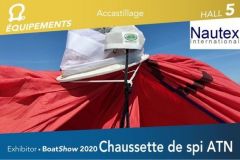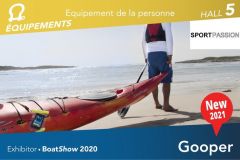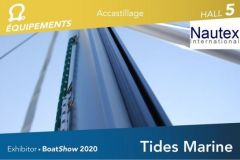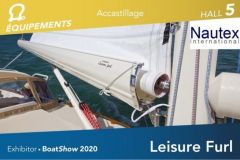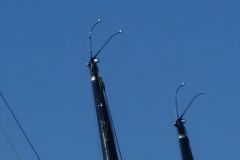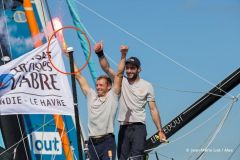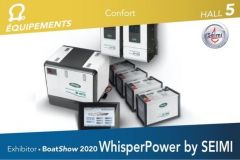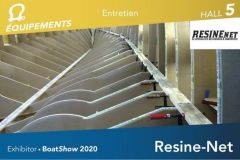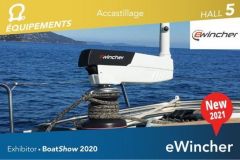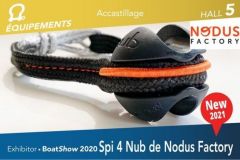Page LCJ Capteurs Information request
This ultrasonic wind vane anemometer, designed and manufactured in Vertou in Loire-Atlantique, is renowned for its precision, light weight, low power consumption and compact design. In 20 years, more than 19,000 LCJ Capteurs ultrasonic wind sensors have been installed in all the seas of the world.
The standard model is designed to be mounted at the head of the mast, but adapts to the specific constraints of sailing boats thanks to its oblique arm. Over the years, the CV7 range has been developed to meet needs such as :
- An adaptation of its attachment to all rigs
- Connectivity according to the on-board equipment
- A wireless function
- High-speed resolution.
CV7: the classic
The delivery of the CV7 Standard consists of the wind sensor with a 31cm inclined support, a mounting bracket, a 25m cable as well as mounting and operating instructions. The CV7 is guaranteed for 2 years, parts and labour, in LCJ Capteurs workshops.
The CV7 Standard has several options depending on the user's needs:
- CV7-WindyPlug (NMEA2000 interface)
- CV7-STBG (universal interface)
- CV7-BARO3 (junction box 12V - barometer NMEA0183)
- CV7-RM-SMART100 (rotating mast - NMEA2000 interface)
- CV7-RM-STBG (rotating mast - universal interface)
CV7-SIL (for SILVA/NEXUS NX2, FURUNO FI30)
CV7-V: ideal for motor boats
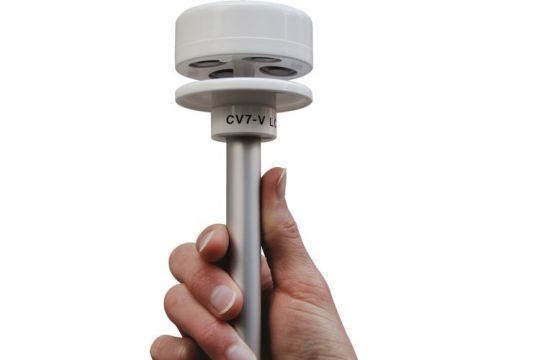
The CV7-V ultrasonic wind sensor has a 31cm vertical aluminium bracket that allows the wind sensor to be positioned at the top of the mast. The data refresh rate is 2Hz.
Available options :
- CV7-V-STBG (universal interface)
- CV7-V-BARO3 (barometer NMEA0183)
- CV7-V-WindyPlug (NMEA2000 interface)
- CV7-V-RM-SMART100 (rotating mast - NMEA2000 interface)
- CV7-V-RM-STBG (rotating mast - universal interface)
CV7-C: light and fast for regattas
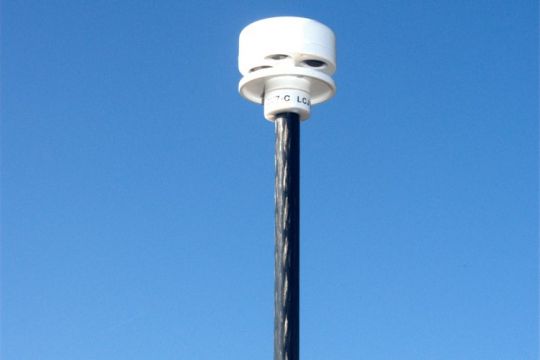
The CV7-C ultrasonic wind sensor is mounted on a 70 cm vertical carbon stand. The carbon bracket, which is lighter than the aluminium bracket of the CV7-V, allows the ultrasonic wind vane anemometer to be less sensitive to air turbulence generated by the sails. In addition, the 4Hz data refresh rate is higher than that of the CV7 Standard and CV7-V.
Available options :
- CV7-C-STBG (universal interface)
- CV7-C-WindyPlug (NMEA2000)
- CV7-C-RM-SMART100 (rotating mast - NMEA2000 interface)
- CV7-C-RM-STBG (rotating mast - universal interface)
CV7-HR: the 2020 novelty for racers

The new high-resolution ultrasonic wind sensor is specially designed for racing yachts. The power of the sensor allows the wind speed and wind angle to be calculated more than 120 times per second.
NMEA0183 compatible, the CV7-HR picks up and transmits information at a communication speed of up to 38,400 Baud. This high-resolution ultrasonic wind vane anemometer is supplied with a shielded cable and a 70 cm vertical carbon bracket.
CV7SF2: the wireless version
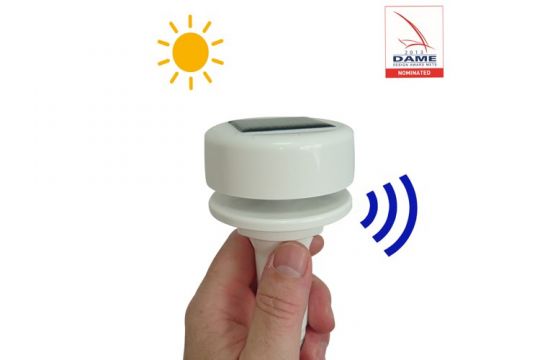
This wireless CV7SF2 ultrasonic wind sensor works day and night. Its wind measurement frequency is 16Hz, with a data refresh rate of 1Hz. Wind speed and wind angle measurements are sent to a receiver box via a 433 MHz AM radio link, which does not require a pairing system. This transmission frequency provides a good radio range and excellent immunity to interference. The receiver box is powered by the on-board equipment.
This ultrasonic wind vane anemometer has an interchangeable LiFePo4 battery powered by a solar cell. Its autonomy is about 35 days in dark night conditions. This battery has a high tolerance to charge and discharge cycles and is resistant to high ambient temperatures.
Available options :
- CV7SF2-WindyPlug (NMEA2000 interface)
- CV7SF2-USB (USB interface)
SIL option
The CV7-SIL allows the CV7 to succeed the old sensors: Nexus NX2, SILVA and FI30. The latter are no longer manufactured at the mechanical masthead. Its "Plug and Play" installation is simple and the connection is made directly on the display in the wind function or on the server.
STBG option: the universal interface
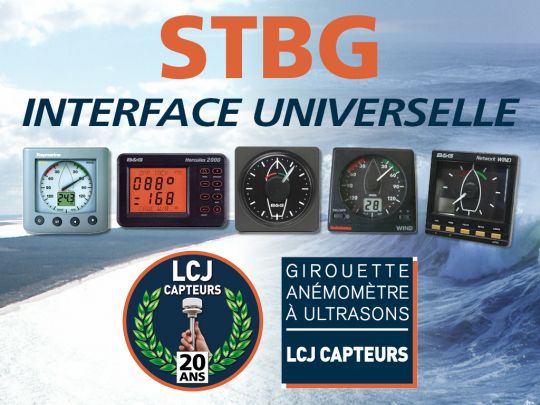
The STBG option is a universal interface that allows the user to keep his navigation system, new or old. It transforms the CV7's NMEA0183 signals into analog signals. Connections are made directly to the MHU input on the masthead of the on-board equipment.
The STBG option is ideal for yachts equipped with navigation systems that are not easily compatible with NMEA interfaces. In addition to being functional with older equipment, this universal interface allows you to keep all the usual data on your display: wind angle and speed, apparent and real, with great accuracy. With a usual manipulation on the display, it is possible to set the mast angle error (offset). This is also possible in the interface, which is not provided for in the NMEA2000 standard.
This universal STBG interface allows the CV7 sensor range to connect to all Raymarine (or Raytheon/Autohelm from ST50 to today), all B&G units (from Hornet IV to today), STOWE equipment (Dataline X, Navigator, etc.) and VDO equipment.
For rotary masts: RM-Smart100 and RM-STBG
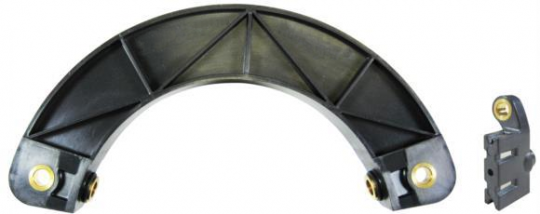
RM-Smart100

This rotating mast angle sensor provides an accurate mast angle reading. Operating with a magnet, it has no rotating parts inside which allows excellent repeatability. It is supplied with the RM calculator, NMEA2000 interface.
RM-STBG
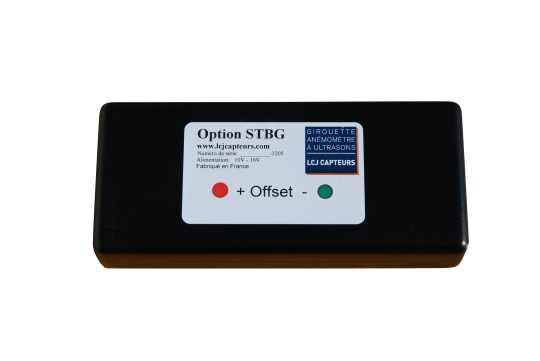
The RM-STBG option is a mast angle correction box including the STBG interface. The readability of its data is possible on any type of display with a 5- or 6-wire mast head input.
Plug and Play NMEA2000
Baroplug

The BaroPlug is a barometer for NMEA2000 systems. Its male MICRO connector allows direct connection to a NMEA2000 backbone.
The installation of this barometer is simple thanks to its "Plug and Play" system on the NMEA2000 network. As soon as it is installed, the atmospheric pressure will be readable on a display with a menu containing this data.
WindyPlug
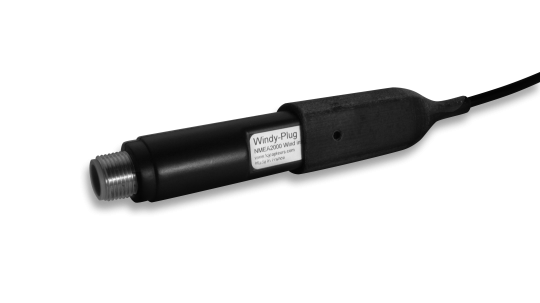
With a design similar to the Baroplug, the WindyPlug is a NMEA2000 interface for ultrasonic wind sensors with an integrated barometer. Compact, it is compatible with all NMEA2000 V2 and V3 equipment. This "Plug and Play" type device has a MICRO C male connector for direct connection to a NMEA2000 bus, simply plug it into the backbone.



